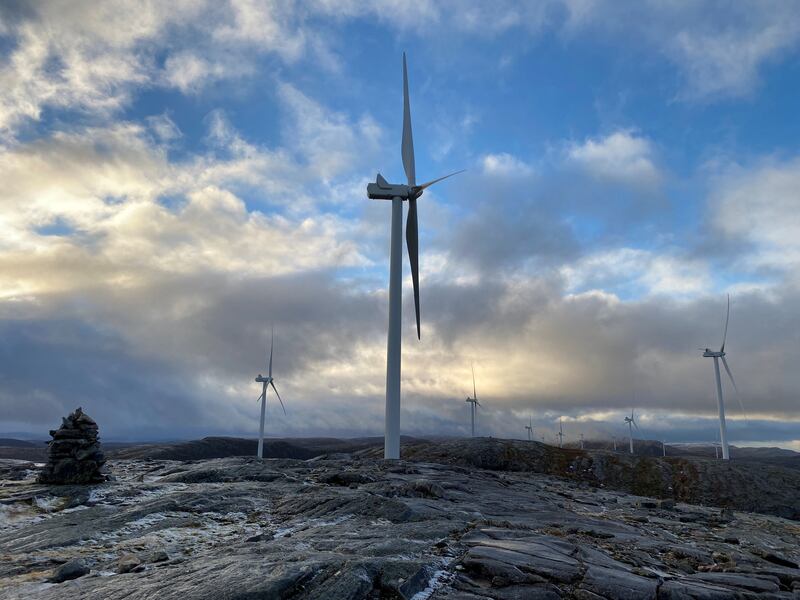Headlines about rising prices are everywhere at the moment – for food, fuel, metals, medicine, computer chips and much more. One of the most significant rises is for the least tangible commodity – European carbon emissions credits. Its record highs have profound implications for the world economy and environment.
The European Trading Scheme began in 2005, and obliges large greenhouse gas emitters, such as power plants, factories and airlines, to hold an allowance for each tonne of carbon dioxide they release. The UK introduced an equivalent system when it left the EU.
It is intended to penalise polluters and encourage them to shift to lower-carbon technologies, for instance by replacing a coal power plant with solar and wind, or an oil boiler with gas or electric heating. The number of allowances is limited and decreases each year, so if companies are too slow in decarbonising, the price will rise.
This market-based mechanism should be more efficient than the US system of mandates and regulations (though the EU has these too). In fact, the archetype of the ETS was introduced by the US in 1990 to cap emissions of sulphur dioxide, which causes acid rain. It proved highly successful and compliance costs were much lower than expected.
For years, the ETS was a joke. It was undercut by more prescriptive rules such as renewable energy targets, by free allocations to big polluters and by the release of “hot air” from permits that exceeded what emissions would have been anyway. Between 2011 and 2017, prices languished around about €5 ($5.61) to €10 tonne, not enough to change anyone’s behaviour significantly.
But in 2018, the rules were tightened and prices started rising. After slipping during the pandemic last year, carbon prices leapt 67 per cent in the first half of this year and reached a record of €88.88 on December 8.
This reflects the revival of economic activity. But it is also accompanied by a surge in gas prices that feeds off and drives the carbon price surge. When gas prices were relatively low, the ETS price would find the level that encouraged power plants to switch from dirty coal to much cleaner gas. For other businesses, the carbon price has been a cost of doing business, not a fundamental driver.
But now, gas prices are too expensive to be preferred to coal – it would need a carbon price of €300 per tonne to equalise them. So power plants combust both coal and allowances simultaneously, driving up the carbon price for every other industry.
Even if the gas price eases after the European winter, other factors will support carbon prices. Germany’s new government plans to set a price floor of €60 per tonne. Shipping will also be included in the ETS and a separate carbon price will be introduced for road transport and building heating. There is a speculative element too to the price jump, as the EU’s plans to slash emissions to 61 per cent below 1990 levels by 2030 imply a sharp reduction in allowances from 2025 onwards.
Such high carbon prices matter for three reasons. Firstly, they will affect the world beyond the EU and UK. Several other jurisdictions have carbon prices, such as some north-eastern US states and California, Canada, South Korea, Japan and China. These markets are not integrated and trade at very different prices – generally well below the EU’s.
But to protect its industries from competition from countries without strong carbon pricing, the EU intends to bring in a carbon border tariff from 2023, which will apply to energy-intensive materials such as steel, aluminium and fertilisers. That will be a strong incentive for others to adopt a carbon price or tax, so they collect revenue rather than paying it to European authorities. That could create a critical mass of linked trade blocs.
Secondly, the tariff will drive major shifts of energy use within the EU. A rate of $100 per tonne of carbon dioxide is equivalent to about $5.3 per million British thermal units of gas (the European price for 2022 is about $26), but almost $200 per tonne of coal, compared to Australian export prices today of $169 per tonne.
So the move will drive out coal in favour of gas. But as coal use is declining and gas prices rise, the latter will also be pressured versus renewables. Efficiency retrofits will reduce overall gas use, turning the attention of the gas market ever more towards Asia where it can still replace coal.
Prices for flights will rise significantly though not intolerably – a return Dubai-New York economy flight, currently selling for about $1200, would increase by $370 at a $100 per tonne carbon price.
Thirdly, the tariffs will encourage innovation that will spread out worldwide. Clean hydrogen will become increasingly attractive in industry. Carbon capture and storage will be viable without subsidies in many cases with carbon prices above $80 per tonne. A proposed tax credit up to $85 per tonne could have a similar effect in the US.
This all requires that Europe sticks on its course, the inevitable political backlash is overcome, and that other countries are drawn into stringent carbon pricing. The road ahead is far from clear, but strong carbon pricing will smooth the way for faster and more radical change than we have imagined.
Robin Mills is chief executive of Qamar Energy, and author of The Myth of the Oil Crisis






